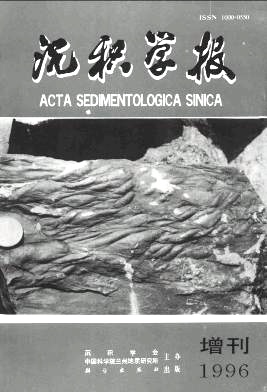Alga Assembtages and Palaeoenvironment of Eogene Hetaoyuan Formation Lacustrine Carbonate Rocks in Biyang Depression, Henan Province
- Received Date: 1995-07-03
- Publish Date: 1996-12-31
-
Key words:
- alga assemblage /
- eogene hetaoyuan formation /
- lacustrine carbonate rock /
- palaeoenvironment /
- biyang depression
Abstract: Biyang Depression is a Mesozoic-Cenozoic interior oil-bearing basin, with an area of 1000 km2, in eastern China. The lacustrine carbonate rocks of the Eogene Hetaoyuan Formation deposited in the center of this basin. They are mainly composed of mudstone, dolomitic mudstone, argillic dolostone, dolostone, silty dolostone and intercalated with alkali beds. The alga fossils from the lacustrine carbonate rocks in the upper third to the second member of Hetaoyuan Formation were studied. They could be dentified as three assemblages, Fromea chytra assemblage, Dictyotidium assemblage and Rugasphaera-Dictyotidium-Concentricystes It reflected that the palaeo-lake water salinity changed from the higher to lower successively. In addition, the vertical alga distribution assumed a cyclical change of flourishing and declining. The higher silinity alga assemlage and the lower one alternately appeared in the algae flourishing periods. It was showed that the palaeo-lake water salinity might undergo three relatively Salty water stages and two relatively fresh water stages under the brackish water setting and the palaeclimate period might include two relatively warm and wet stages and three relatively hot and dry stages in the depositional period of the upper third to the second member of Hetaoyuan Formation.
| Citation: | Yan Cunfeng, Huang Xinzheng, Wang Suiji. Alga Assembtages and Palaeoenvironment of Eogene Hetaoyuan Formation Lacustrine Carbonate Rocks in Biyang Depression, Henan Province[J]. Acta Sedimentologica Sinica, 1996, 14(S1): 57-62. |






 DownLoad:
DownLoad: